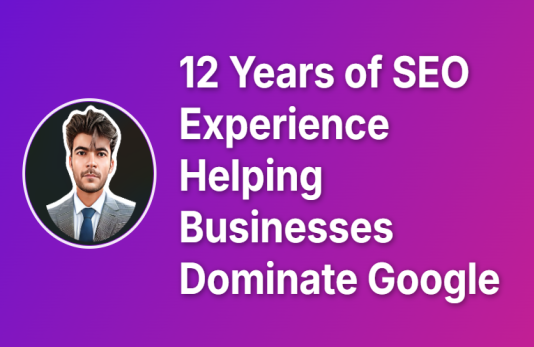Why Build a Personal Brand on LinkedIn?
Building a personal brand on LinkedIn is key to shaping your professional identity in today’s digital world. A strong personal brand helps you stand out among peers and attract potential employers or clients. It boosts your online presence and improves your visibility within your industry.
A solid personal brand shows who you are as a professional. It highlights your skills, values, and unique experiences. This well-rounded representation allows others to connect with you on multiple levels—intellectually, emotionally, and professionally. These connections can lead to valuable networking opportunities.
Personal branding also builds trust among colleagues and industry leaders. By sharing useful insights and engaging genuinely with your network, you showcase your expertise and foster relationships based on mutual respect. Investing time in this area can result in greater engagement and recognition.
The Benefits of a Strong LinkedIn Presence: Attracting Opportunities and Growing Your Business
A strong LinkedIn presence opens doors to many opportunities in your professional life. By optimizing your profile and actively engaging with the community:
- Attract Job Offers: An appealing profile helps recruiters find candidates that fit their needs. Showcasing key achievements and relevant skills positions you well for job openings.
- Establish Connections: Networking becomes effective when you're seen as an active participant in discussions about industry trends. These connections can lead to business partnerships or collaborations that benefit everyone involved
- Enhance Employer Branding: For those focusing on recruitment, highlighting employee expertise through individual profiles can strengthen overall company branding by showcasing its culture.
Refining how you present yourself on this platform brings significant benefits not only for your career but also contributes positively to business growth by creating referral networks that extend reach over time.
By emphasizing personal brand development alongside strategic engagement, you position yourself effectively in today’s job market while increasing brand visibility across social media channels like LinkedIn.
Crafting Your LinkedIn Personal Brand Strategy: Defining Your Goals and Target Audience
Building a personal brand on LinkedIn starts with knowing what you want to achieve and who you want to reach. This clear direction helps improve your digital presence and boosts audience engagement, which is vital for personal brand growth.
First, think about your goals for using LinkedIn. Do you want to find a job, show your expertise in a certain field, or connect with professionals in your industry? By defining your goals, you shape the content you create and how you interact with others.
Next, identify your target audience. Look at their professional backgrounds and interests. What challenges do they face? Tailoring your content to meet their needs can lead to better engagement. For example, if you aim at young tech professionals, share insights on new technologies to position yourself as a thought leader in that space.
Effective personal branding strategies require consistent messaging across all interactions on the platform. Use clear language about who you are and the value you offer. This approach helps create a strong professional identity that draws the attention of potential employers or collaborators.
Creating a Compelling LinkedIn Profile: Optimization for Maximum Impact
Your LinkedIn profile acts as a digital resume—making it crucial to optimize for maximum online visibility and credibility within your field.
Make sure each section of your profile highlights professionalism while showing parts of your personality and expertise. Include keywords related to personal branding in various sections like your headline, summary, and experience descriptions. This practice enhances your searchability when recruiters look for specific skills.
Craft a compelling summary that clearly states who you are professionally while highlighting key achievements relevant to potential connections or employers. Sharing stories about challenges you've faced or projects you're proud of can make this narrative engaging.
Also, consider adding testimonials from colleagues or clients. These serve as social proof of your skills and build trust among those considering collaboration or job offers.
Optimizing Your LinkedIn Profile Picture and Headline
The first thing people notice on your profile is your picture - it makes a significant impression. Choose a clear headshot where you look professional according to industry standards. A confident expression can foster positive views about your professionalism.
Your headline is equally important; it should do more than list job titles. Use it wisely by including keywords related to both current roles and future positions you'd like potential employers or clients to associate with (e.g., “Digital Marketing Strategist | Content Creator | Helping Brands Grow Online”).
This strategy communicates what you're currently doing while hinting at where you'd like to go in your career—all contributing to building a strong personal brand identity on platforms like LinkedIn.
Leveraging LinkedIn Marketing: Content, Ads, and Networking Strategies
Creating a strong personal brand on LinkedIn takes careful planning. By using effective marketing strategies, you can boost your brand visibility and build valuable professional relationships. This guide discusses how to use content creation, advertising campaigns, and networking techniques to engage your audience effectively.
Creating Engaging LinkedIn Content: Showcasing Your Expertise and Thought Leadership
A clear LinkedIn content strategy helps you stand out as an industry expert. Good quality content shows your knowledge and can establish you as a thought leader.
Types of Content to Share on LinkedIn
To engage your audience effectively, try sharing various types of content:
- Articles: Write articles that highlight your expertise in specific areas.
- Industry News: Share updates or insights related to your field. This shows you're in touch with what's happening.
- Project Updates: Post about projects or achievements regularly to strengthen your professional image.
- LinkedIn Carousel: Share carousel posts that break down complex ideas or showcase key insights in a visually engaging format. Carousels allow you to present information in bite-sized slides, making it easier for your audience to digest and engage with your content. This format works well for tutorials, industry trends, or summarizing key takeaways from your articles.

By sharing diverse content, you create chances for deeper connections with professionals and improve your online presence.
Best Practices for Engagement
Monitoring engagement metrics is essential to see how well you're connecting with your audience. To increase user engagement:
- Encourage comments by asking questions at the end of your posts; this invites readers to share their thoughts.
- Respond quickly to comments on your posts. This interaction builds community and strengthens relationships in your network.
Running Effective LinkedIn Ad Campaigns: Reaching Your Target Audience

LinkedIn ad campaigns are powerful tools for targeting specific audiences, especially for B2B marketing. Using these features wisely can enhance your personal branding efforts significantly.
Setting Up Your Campaigns for Success
When creating ad campaigns on LinkedIn:
- Clearly define what you want to achieve, such as lead generation or driving traffic to your website.
- Use precise targeting options based on job titles or industries that match your goals.
These steps help ensure that ads reach the right people—maximizing return on investment.
Analyzing Ad Performance
Regularly reviewing analytics metrics is vital for improving future campaigns. Keep an eye on performance data to spot successful elements in your ads so adjustments can be made as needed:
- Change targeting parameters based on campaign success rates; understanding which demographics respond best allows better resource allocation.
By applying these strategies across both organic content creation and paid ads, professionals can boost their presence on LinkedIn while drawing in new opportunities that align with their career goals.
Connecting with Your Audience on LinkedIn: Building Relationships and Generating Leads
Engaging with your audience on LinkedIn is vital for your personal branding and professional networking. Meaningful interactions help in relationship management, boost audience engagement, and generate valuable leads.
Strategies for Effective Engagement
Start by defining your personal brand identity. Knowing who you are and how you want to be seen in your industry helps shape your messages. Personalization is crucial. Instead of sending generic notes, create customized messages that speak to the recipient's interests.
Building professional connections requires consistent interaction. You can kick off conversations by commenting on posts from people in your network or those you want to connect with. Ask open-ended questions that encourage dialogue rather than just making statements. Once you've established relationships, keep them alive with regular check-ins or by sharing relevant content that may interest your contacts.
Networking strategies should leverage mutual connections as conversation starters. Being genuine in your outreach creates an immediate sense of trust.
The Power of Connection Requests
When you send connection requests, remember it’s more than just growing your network; it’s about building trust from the start. Best practices suggest these requests should highlight common interests or goals, showing that you've put thought into reaching out.
Always personalize your connection request. Mention why you'd like to connect—perhaps refer to a recent post they shared or their work experience that resonates with you. Trust is built gradually but starts here; thoughtful outreach sets the tone for positive engagement.
Utilizing LinkedIn Groups for Professional Networking and Community Engagement

LinkedIn groups are powerful tools for professional networking and community engagement. They allow members to connect over shared interests while enhancing their online presence.
Finding the Right Groups to Join
To find relevant groups, search using industry-specific keywords related to your interests and career goals. Look for groups where active discussions happen regularly—this indicates engaged members likely eager to share insights or referrals.
Consider joining niche communities focused on specialized skills within your field. These groups can lead directly into referral networks beneficial for lead generation purposes.
Contributing Value in Groups
Active participation in group discussions positions you as a thought leader—an essential aspect of content creation aimed at visibility on LinkedIn. Share insightful articles, pose engaging questions about current trends, or offer solutions drawn from past experiences related to ongoing dialogues among group members.
By consistently providing value without overwhelming self-promotion, you'll gain recognition among peers while solidifying efforts needed for effective digital networking!
Creating Your Own Group
Starting a personal group centered around specific topics relevant to industry trends offers great potential for employer branding and brand recognition! To successfully attract members:
- Define what unique value will draw people in.
- Foster an inclusive atmosphere that encourages open dialogue.
- Regularly facilitate discussions ensuring all participants feel valued.
This approach builds community spirit while reinforcing authority in your field and expanding your digital footprint!
Using LinkedIn Analytics to Track Your Progress and Optimize Your Strategy

Understanding Key Metrics for Success
LinkedIn analytics gives you important details about how well you're doing. You can see things like profile views, connection requests, post likes and comments, and follower growth. Checking these metrics regularly can really help improve your personal branding strategy:
- Identify What Works: Look at which posts get the most attention. This helps you know what interests your audience.
- Adjust Your Schedule: Pay attention to engagement rates to see how often you should post. If certain types of posts do well at certain times, change your posting frequency.
- Know Your Audience: Find out who interacts with your content. This knowledge helps you tailor future posts to meet their interests.
These insights help enhance your visibility on LinkedIn while strengthening your digital footprint.
Tools for Tracking Performance
Besides LinkedIn’s own analytics, there are tools that can provide more insights:
- Google Analytics: Use this tool to track traffic coming from LinkedIn to your website or blog. This data shows how effective your LinkedIn presence is in attracting visitors.
Combining both internal and external tools offers a full picture of your online reputation management efforts.
Enhancing Visibility and Attracting Clients Through Strategic LinkedIn Engagement

Engaging with Your Network Regularly
To boost visibility on LinkedIn effectively:
- Share insightful articles that relate to your industry; this builds your image as a thought leader.
- Comment meaningfully on posts from your connections instead of just liking them; this creates deeper relationships.
- Use multimedia like videos or infographics; these formats grab attention better than plain text.
Regular engagement not only raises your visibility but also plays a key role in forming professional relationships that can lead to new clients.
Building Relationships Through Consistent Interaction
Building trust within your network requires ongoing interaction:
- Personalize connection requests by mentioning shared interests or mutual contacts; this increases the chances of acceptance.
- After connecting, send a welcome message offering help related to their field—this shows genuine interest and opens up opportunities for collaboration.
These personalized approaches lay the groundwork for strong professional relationships over time.
Leveraging Recommendations and Endorsements
Getting colleagues and clients to leave recommendations on your profile acts as social proof of your credibility—an essential part of personal brand audits. To further enhance reputation management:
- Actively endorse the skills of others in exchange for endorsements back—this builds rapport while boosting visibility among peers in similar fields.
This practice strengthens community ties and improves overall perception within the platform's ecosystem.
Advanced Personal Branding Strategies on LinkedIn: Thought Leadership and Continuous Improvement
Building a strong personal brand on LinkedIn goes beyond having an impressive profile. It involves strategic thought leadership and a commitment to ongoing improvement. To enhance your professional identity, focus on credibility through consistent engagement and valuable contributions.
Establishing Thought Leadership
Thought leadership helps you stand out in your industry. Share insights that showcase your expertise. Create content that tackles current trends or challenges in your field, like articles, videos, or engaging posts. Make sure to interact with other leaders by thoughtfully commenting on their posts or sharing their content with your own take.
Digital Storytelling: Use storytelling to share experiences and lessons from your career. Narratives make complex information relatable while creating emotional connections with your audience. This can improve both visibility and reputation management.
Continuous Improvement of Your Online Presence
To stay relevant in the fast-changing digital world, regularly update your LinkedIn profile and engage with new platform features. Join discussions about recent industry developments; this shows adaptability and reinforces personal brand development.
Keep track of feedback from peers on how effective your content is for building credibility. Use analytics tools on LinkedIn to monitor engagement metrics like likes, shares, comments, and the overall reach of your posts.
Long-Term LinkedIn Strategy: Maintaining Momentum and Adapting to Changes
A successful long-term strategy for maintaining momentum includes using various LinkedIn growth strategies tailored for career development goals.
Enhancing Visibility Through Content Marketing
Regularly publish high-quality content to boost visibility among peers and establish yourself as an authority in specific areas. Consistency is key; setting a posting schedule helps keep you top-of-mind without overwhelming connections.
Engagement metrics are vital indicators of content reception. Track which types resonate most with followers so future posts can be refined based on data rather than guesswork.
Professional Networking Dynamics
Effective networking means nurturing relationships over time instead of just connecting randomly online. Authentic engagement fosters deeper connections that can lead to collaborations or opportunities later on. This is especially important in a professional environment like LinkedIn, where building relationships complements traditional job-search methods.
By adopting advanced strategies centered around thought leadership and integrating them into continuous improvement efforts, you can cultivate a robust reputation and attract new opportunities that align closely with your aspirations!
Conclusion
Using analytics tools along with strategic engagement practices on LinkedIn can greatly improve both personal branding outcomes and business opportunities over time. With consistent efforts in profile optimization, you're likely to attract more connections and potential clients.
FAQs
Q1: How can I optimize my LinkedIn profile for personal branding?
A1: Optimize your LinkedIn profile by using industry-specific keywords, creating a compelling summary, and showcasing your skills. Highlight achievements and include endorsements from colleagues to build credibility.
Q2: What are effective personal branding tips for job seekers?
A2: For job seekers, focus on creating engaging content, optimizing your profile, and networking consistently. Participate in relevant groups and use connection requests wisely to expand your network.
Q3: What LinkedIn growth strategies can enhance my professional presence?
A3: Employ strategies like posting quality content regularly, joining networking events, and leveraging multimedia content. Use analytics to refine your approach based on audience engagement.
Q4: How do I conduct a personal brand audit on LinkedIn?
A4: Assess your profile by checking the completeness of sections, analyzing engagement metrics, and gathering feedback from peers. Adjust your content strategy based on findings to improve brand awareness.
Q5: How can I use influencer marketing on LinkedIn?
A5: Connect with influencers in your industry. Share their content while adding your insights. This practice enhances visibility and strengthens professional relationships.
Essential Tips for Building Your Personal Brand on LinkedIn
- LinkedIn Profile Optimization: Craft a headline that reflects your career goals.
- Personal Branding Tips: Focus on consistency across all posts.
- Networking Strategies: Attend local networking events to connect with professionals.
- Content Creation: Share valuable articles related to your field.
- Credibility Building: Request endorsements from colleagues after completing projects.
- Brand Recognition: Engage with others’ posts to increase visibility.
- Job Search Networking: Utilize connections when exploring job opportunities.
- Lead Generation: Use calls-to-action in posts to attract potential clients.
- Professional Reputation: Maintain an active presence to boost trustworthiness.
- SEO for LinkedIn: Incorporate keywords naturally in your posts for better discoverability.
















 Download
Download